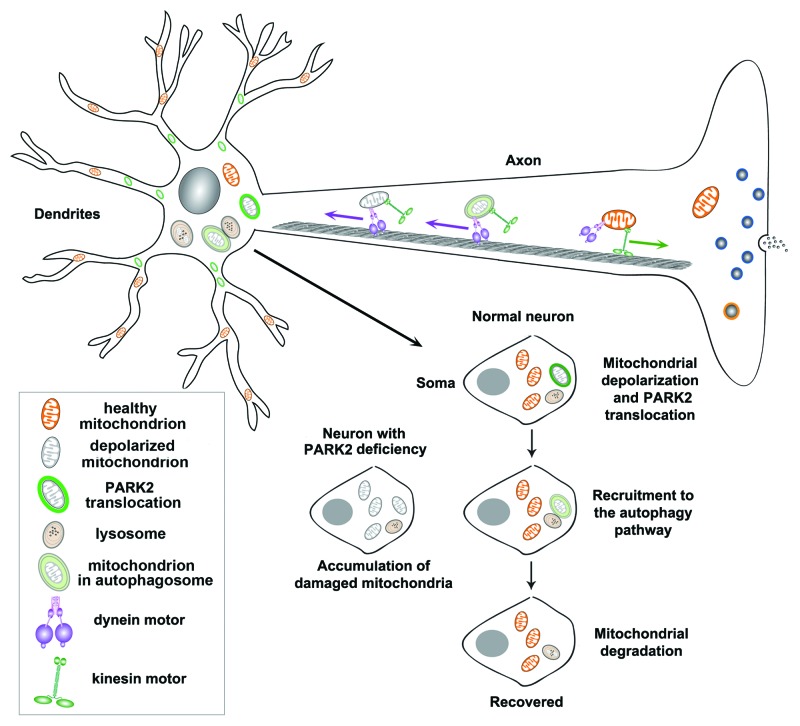Figure 1. A proposed model of neuronal mitochondrial transport and quality control via PARK2-mediated mitophagy. PARK2 is selectively recruited to depolarized mitochondria to form a ring-like structure predominantly accumulated in the soma and proximal dendritic regions. PARK2 recruitment is hardly detectable in axons and the distal dendritic processes. In neurons with PARK2 translocation, anterograde axonal transport of mitochondria is reduced, whereas retrograde transport is relatively increased. Altered mitochondrial mobility is attributed to a unique distribution pattern: while healthy mitochondria are distributed distally to support synaptic function, PARK2-targeted depolarized mitochondria are restricted to the somatodendritic regions, where mature lysosomes are predominantly located. This spatial and dynamic process allows neurons to efficiently eliminate damaged mitochondria via the autophagy-lysosomal pathway for neuronal recovery. In contrast, PARK2 deficiency impairs the elimination of dysfunctional mitochondria.

An official website of the United States government
Here's how you know
Official websites use .gov
A
.gov website belongs to an official
government organization in the United States.
Secure .gov websites use HTTPS
A lock (
) or https:// means you've safely
connected to the .gov website. Share sensitive
information only on official, secure websites.
